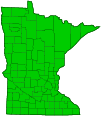bumble bees
(Bombus spp.)
Overview • Description • Distribution • Taxonomy
Description |
Bumble bees have robust, rounded bodies covered with long soft hair. They are black with usually yellow, rarely orange, contrasting markings. The upper surface of the abdomen is hairy. On the forewing the second submarginal cell is somewhat rectangular and about as long as the first. On the hindwing there is no jugal lobe. |
Distribution |
||
|
Sources Biodiversity occurrence data published by: Minnesota Biodiversity Atlas (accessed through the Minnesota Biodiversity Atlas Portal, bellatlas.umn.edu, 7/14/2025). |
|
| 7/14/2025 | ||
Occurrence |
||
|
||
Taxonomy |
|
Order |
Hymenoptera (Ants, Bees, Wasps, and Sawflies) |
Suborder |
Apocrita (Narrow-waisted Wasps, Ants, and Bees) |
Infraorder |
Aculeata (Ants, Bees, and Stinging Wasps) |
Superfamily |
Apoidea (Bees and Apoid Wasps) |
Epifamily |
|
Family |
Apidae (honey bees, bumble bees, and allies) |
Subfamily |
Apinae (honey, bumble, longhorn, orchid, and digger bees) |
Tribe |
Bombini |
Subfamily |
|
Subordinate Taxa |
|
American bumble bee (Bombus pensylvanicus) black-and-gold bumble bee (Bombus auricomus) brown-belted bumble bee (Bombus griseocollis) common eastern bumble bee (Bombus impatiens) confusing bumble bee (Bombus perplexus) Fernald's cuckoo bumble bee (Bombus fernaldae) frigid bumble bee (Bombus frigidus) golden northern bumble bee (Bombus fervidus) half-black bumble bee (Bombus vagans) Hunt’s bumble bee (Bombus huntii) indiscriminate cuckoo bumble bee (Bombus insularis) lemon cuckoo bumble bee (Bombus citrinus) Nevada bumble bee (Bombus nevadensis) northern amber bumble bee (Bombus borealis) red-belted bumble bee (Bombus rufocinctus) rusty patched bumble bee (Bombus affinis) Sanderson’s bumble bee (Bombus sandersoni) tricolored bumble bee (Bombus ternarius) |
|
Synonyms |
|
|
|
Common Names |
|
bumble bees bumblebees |
|
Bumble Bee or Bumblebee?
In common usage the word bumblebee is written at least as often as the as the term bumble bee. In scientific usage, however, there is a “correct” form. The rule is: if the second part of the term accurately reflects the organism’s identity then it should stand alone. If it does not, then it should be concatenated. In short, “If true, then two.”
The Entomological Society of America follows the convention suggested by R. E. Snodgrass, author of Anatomy of the Honey Bee, when assigning common names to insects. Snodgrass states, “If the insect is what the name implies, write the two words separately; otherwise run them together. Thus we have such names as house fly, blow fly and robber fly contrasted with dragonfly, caddisfly and butterfly, because the latter are not flies, just as an dandelion is not a lion and a silverfish is not a fish. The honey bee is an insect and is preeminently a bee; ‘honeybee’ is equivalent to ‘Johnsmith.’”
Visitor Photos |
||
Share your photo of this insect. |
||
This button not working for you? |
||
Mike Poeppe |
 |
Alfredo Colon |
||
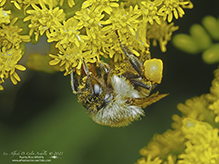 |
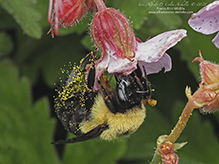 |
|
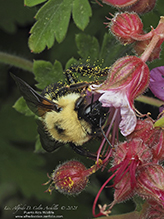 |
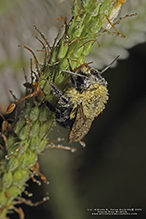 |
|
Dan W. Andree |
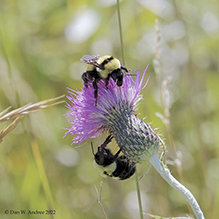 |
2 Bumble Bees on a Thistle Bloom... 2 on the same plant made me smile. |
Luciearl |
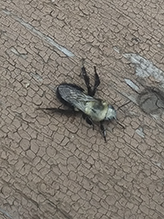 |
I have a huge area of jewelweed. This bee seems to be especially attracted to it. |
MinnesotaSeasons.com Photos |
||
|
||
|

Slideshows |
|
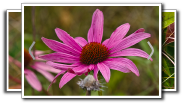
Visitor Videos |
||
Share your video of this insect. |
||
This button not working for you? |
||
|
Other Videos |
||
Bombus sp. |
About
Jan 19, 2009 probably Bombus terrestris |
Bumble Bee (Bombus sp.) pollinating Bog Bottle Gentian |
About
Oct 25, 2009 A video I took on my digital camera (hence the modest clarity)- this is a gentian species endemic to bogs of the southeastern United States. The pollination process is interesting- the flowers develop, but the petals remain tightly closed. This means that the bumble bees (Bombus sp.) that pollinate the flowers have to pry the petals apart in order to get in to the flowers, which have copious amounts of pollen for them to eat. In the process they are unknowingly cross-pollinating the flowers, which ensures good seed-set. The flowers open in late Fall, towards the first frost and are probably one of the last sources of food before the Bumble bees settle in for Winter. Enjoy! |
Bombus sp. (bumblebee) visiting Impatiens capensis (jewelweed) - with bonus clumsiness |
About
Sep 20, 2017 Uploaded for discussion over at my blog: http://canadianecology.blogspot.com/2017/09/impatiens-capensis-pollination-bonus.html |

Visitor Sightings |
||
Report a sighting of this insect. |
||
This button not working for you? |
||
Mike Poeppe |
Location: Houston, MN |
 |
| Dan W. Andree 8/31/2022 |
Location: Frenchman’s Bluff SNA 2 on the same plant made me smile. |
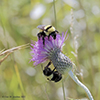 |
| Luciearl 8/26/2022 |
Location: Lake Shore I have a huge area of jewelweed. This bee seems to be especially attracted to it. |
 |
| Alfredo Colon 8/25/2022 |
Location: Albany, NY |
 |
| Alfredo Colon 5/30 to 6/1/2021 |
Location: Woodbury, MN |
 |
| Alfredo Colon 8/12/2019 |
Location: Woodbury, MN |
 |
MinnesotaSeasons.com Sightings |
||
|

Created: 4/6/2020 Last Updated: © MinnesotaSeasons.com. All rights reserved. |
